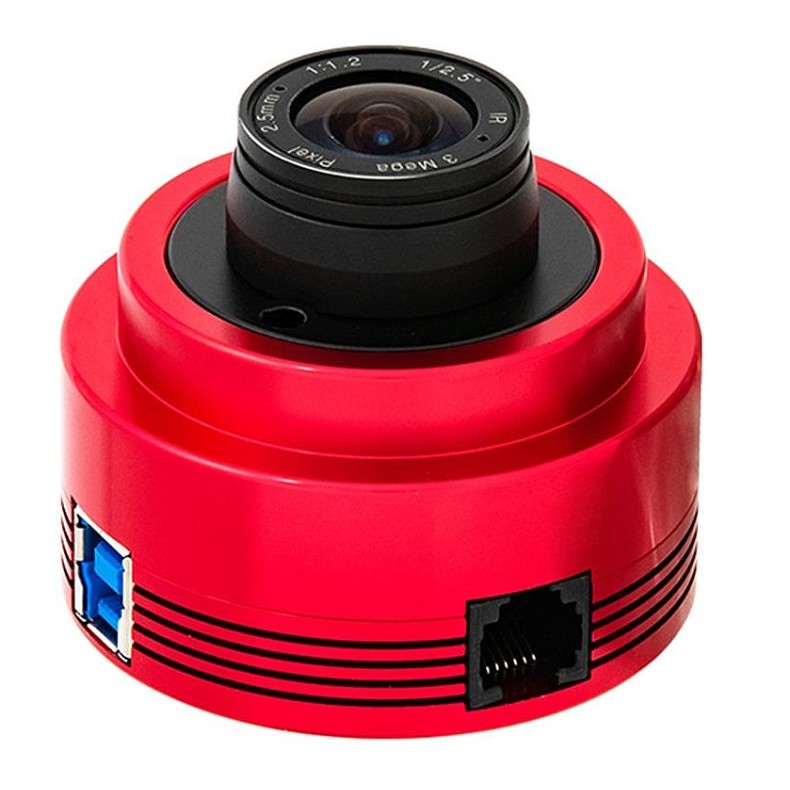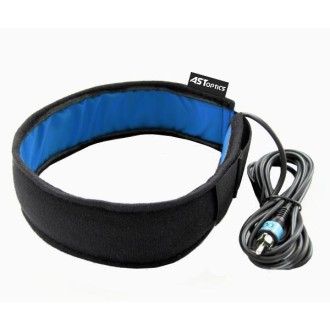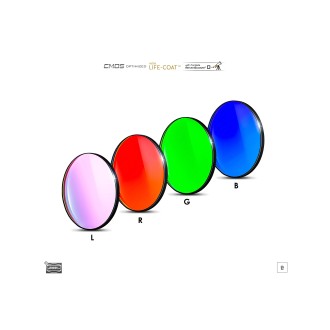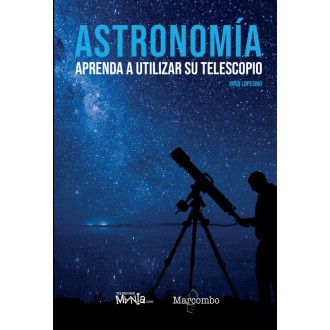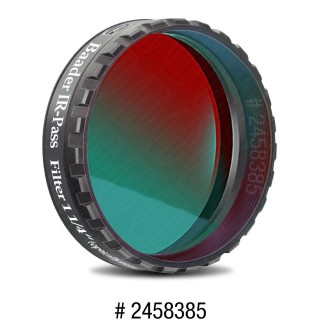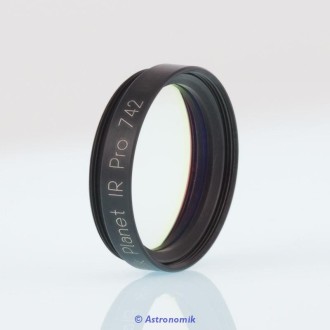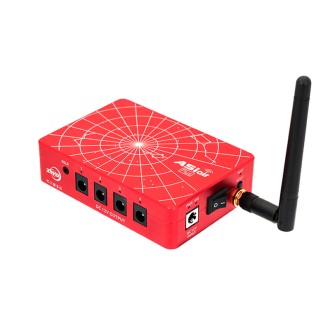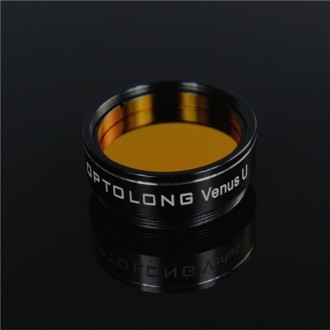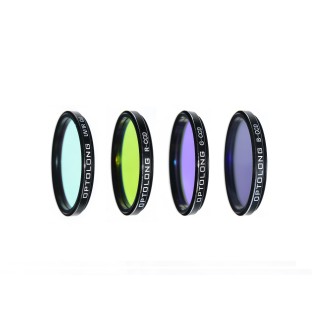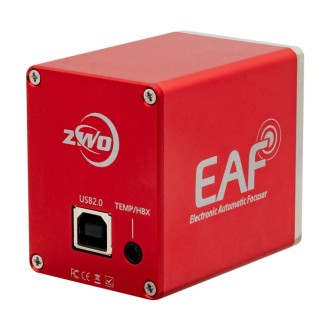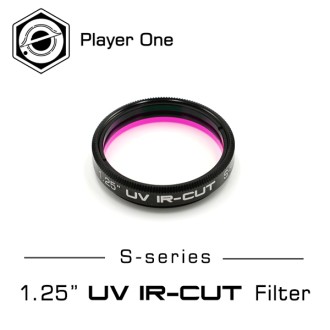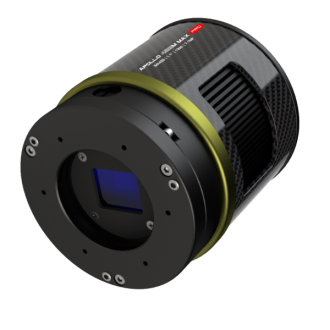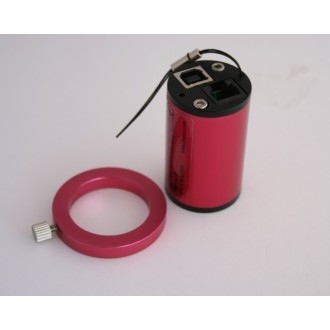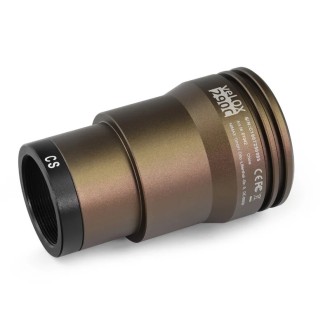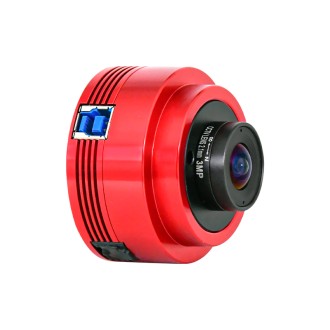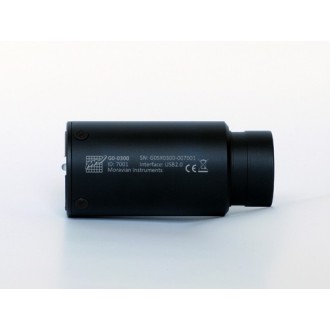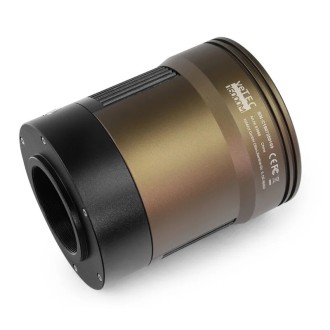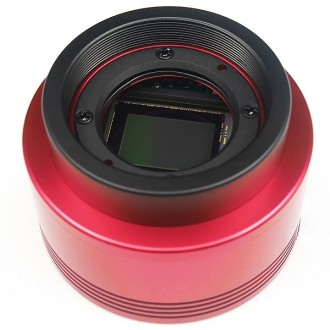
Monochrome camera ZWO ASI678MM
| Carrier | Description | Estimated Delivery | ||
|---|---|---|---|---|
 |
Home delivery - International | Home delivery - International |
Thursday, 6 February - Thursday, 13 February |
|

Home delivery - International
Home delivery - International
Estimated delivery:
Thursday, 6 February - Thursday, 13 February
The camera ZWO ASI678MM is equipped with a monochrome CMOS sensor with 8.4 million pixels (3840 x 2160 px) and a diagonal of 8.9 mm, in 16:9 format. At full resolution, the maximum frame rate is 47 fps with a dynamic range of 12 bits. Featuring the latest technologies of Sony's STARVIS 2 sensor architecture, the camera offers state-of-the-art functionalities: total absence of electroluminescence, wide dynamic range, very high sensitivity in near infrared and dark current, and very low read noise.
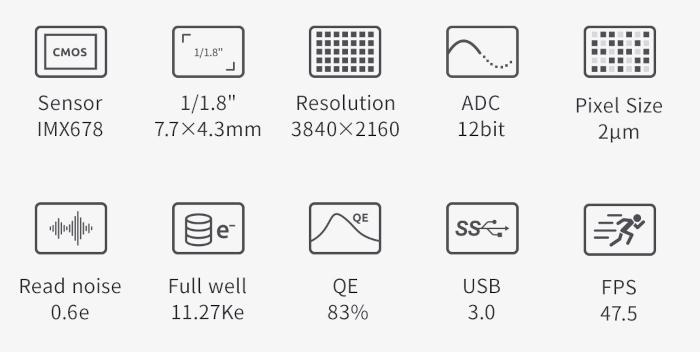
Key features of the camera ZWO ASI678MM
With its 1/1.8" color sensor, the ZWO ASI678MM is ideal for high-speed planetary imaging. You will be able to take superb pictures of the planets while avoiding the vagaries of atmospheric turbulence. Thanks to its low-light sensitivity, the 678MM offers excellent results in visually aided or deep sky imaging using the "lucky imaging" technique (fast burst acquisition and subsequent stacking of a large number of deep sky images).
The IMX678 has square pixels only 2 µm on a side. With such small pixels, it is very important to calculate the sampling resulting from your setup according to your observing conditions and seeing. If necessary, you will need to adapt the focal length of the instrument or perform binning, so as not to oversample the images too much.
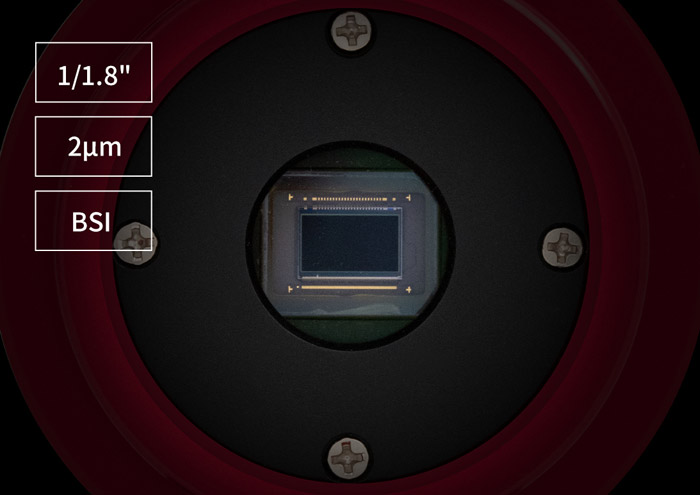
Sensor performance
Designed by Sony for surveillance and security applications, the IMX678 sensor is based on the STARVIS 2 technical architecture. It incorporates powerful functions that produce bright, high-contrast images with high dynamic range, even in extremely limited lighting conditions. It incorporates powerful functions that produce bright, high-contrast images with high dynamic range, even in extremely limited lighting conditions. The most important of these is the use of an optoelectronic structure known as a "backsideillumination" (or BSI) sensor. All the sensor electronics are placed under the photosites, which reduces the distance light has to travel through the sensor and the blocking of photons by the non-photosensitive electronics. Sensitivity is greatly increased, even in very low light conditions. The sensor is also extremely efficient in the near infrared (NIR), a spectral band favored by planetary astrophotographers for its reduced sensitivity to atmospheric turbulence. This staggered structure allows more electronics, such as ADCs, to be placed on the sensor itself, minimizing artifacts and noise.
Compared to previous generations of Sony sensors, the IMX678 offers very low read noise and reduced dark current, which significantly improves the signal-to-noise ratio. A comparison of two black images shows that the ASI678MM image is less noisy and smoother.
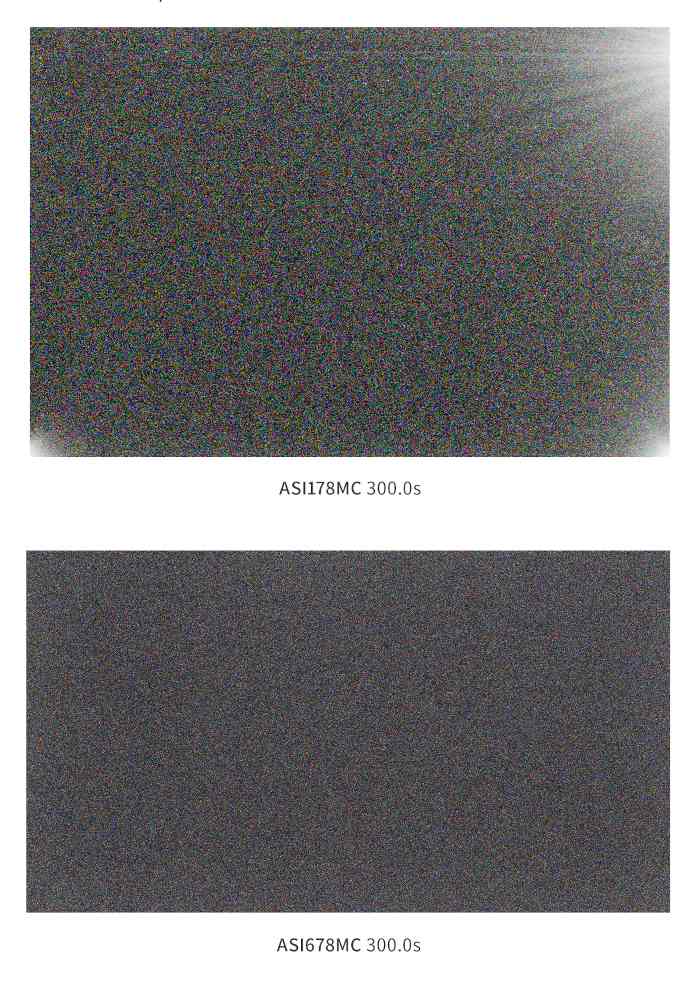
Electroluminescence compared between the ZWO ASI178 and ASI678 cameras, on a black image (300s unit exposure). Electroluminescence is totally absent in ASI678 and noise is reduced.
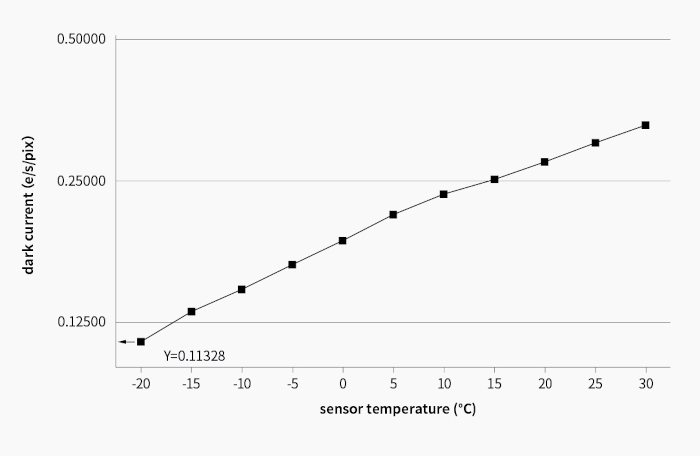
Comparative dark current of an ASI678 camera, as a function of temperature. Dark current is expressed in electrons per second per pixel.
Quantum efficiency and readout noise are the two most important parameters for measuring the performance of a camera. High quantum efficiency and low readout noise are necessary conditions for a significant improvement of the signal-to-noise ratio.
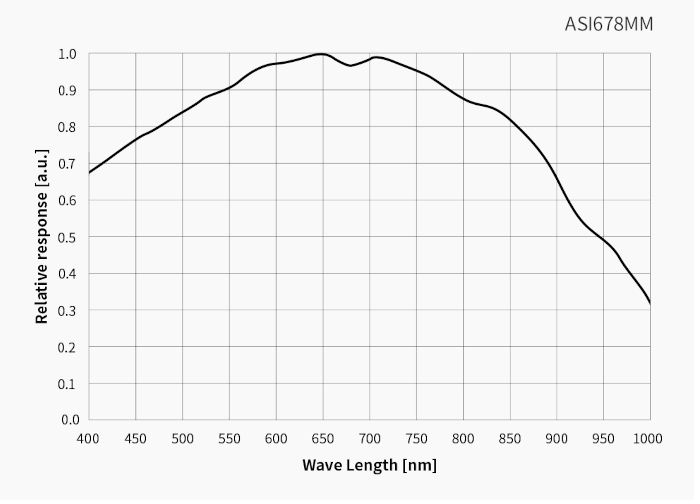
Relative quantum efficiency of the ASI678MM color camera sensor as a function of wavelength.
Readout noise is the sum of several components: thermal noise from the photosites, noise from the sensor electronics and quantization noise from the analog/digital conversion steps. The lower the read noise, the better the results, so technological work is carried out at all levels to reduce it as much as possible. At the output, the camera incorporates a HCG (High Conversion Gain) device to reduce read noise at high gain while maintaining the high dynamic range that would be obtained at low gain. This HCG mode is automatically activated as soon as the gain reaches 182.
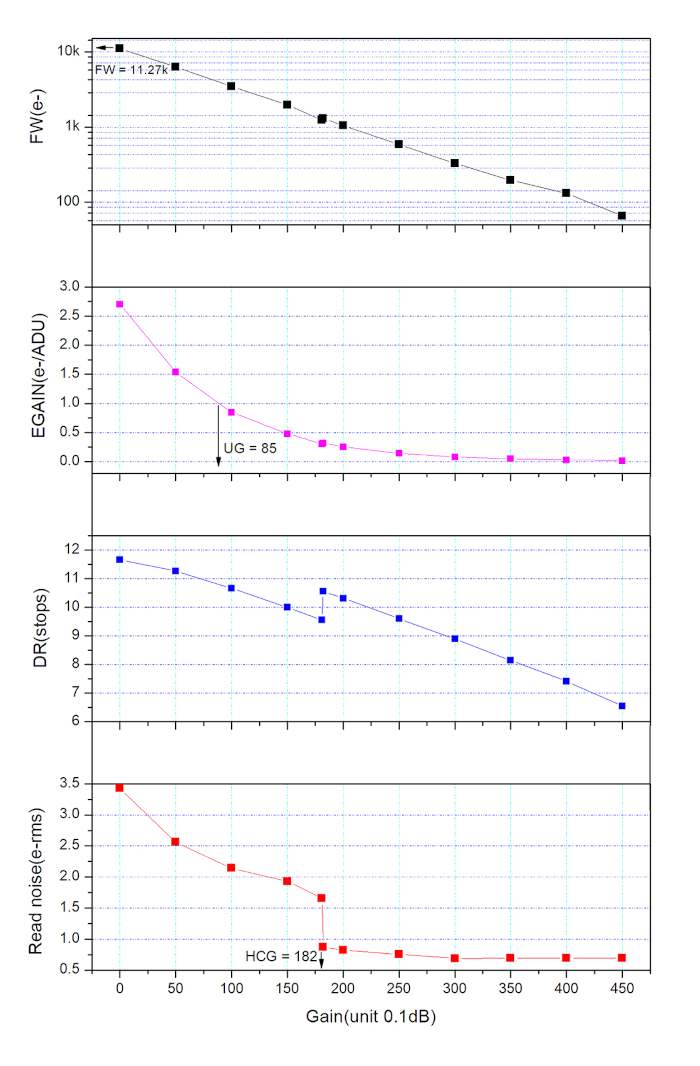
Pixel capacity, gain, dynamic range and read noise of the ZWO ASI678MM camera.
Comparison between ASI678 and ASI178
The ZWO ASI678 camera is considered an evolution of the ASI178 model with, among other things, absence of electroluminescence, reduction of dark current and read noise. The following table shows the main features of the ZWO ASI678 and ASI178 cameras.
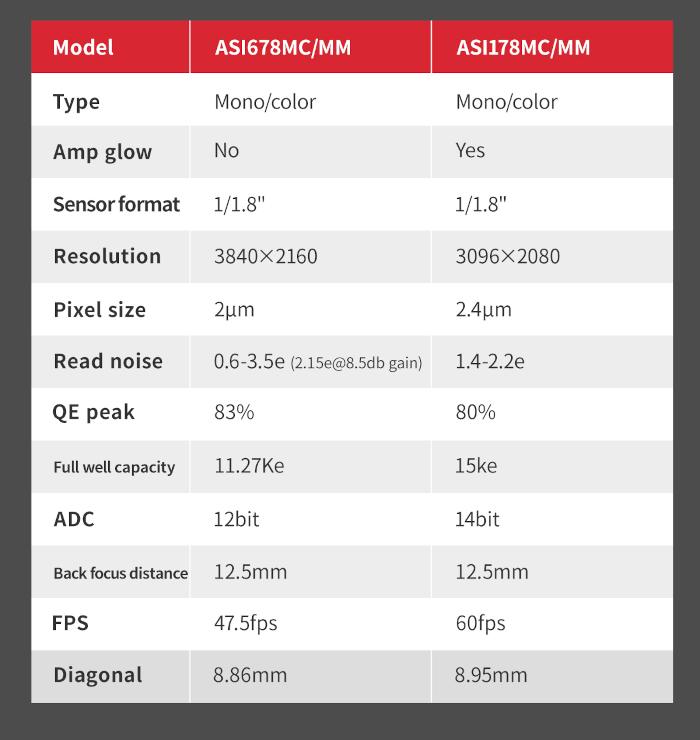
Comparison of the main features of the ZWO ASI678 and ASI178 cameras.
Mounting mechanics
The ASI678MM has an M42 female input thread; the rear focus is 12.5 mm. A mechanical M42 to 31.75 mm male converter is supplied, as well as a 2 m USB cable and an ST4 autoguider cable. ZWO also offers a well-made 2.5 mm focal length lens. Thus equipped, the camera can also be used as an All-Sky camera for sky surveillance.
Software
As with all cameras ZWO, the main and most comprehensive camera control software is ASIStudio, downloadable free of charge from the manufacturer's website ZWO. The brand also offers a free SDK (Software Development Kit) for many free or paid software packages to natively support ZWO cameras: Prism, NINA, FireCapture, MaximDL, SharpCap, PHD2, AllSkEye, etc. We invite you to consult the specific documentation of these softwares for their level of compatibility or visit the ZWO website for an exhaustive list.
ZWO also offers a unified ASCOM driver to control all your accessories through the ASCOM/Alpaca platform. This driver can be downloaded free of charge from the ZWO website.
For Linux and Mac users, the Indi or Indigo drivers are free and available on the websites of these platforms. Control is via KStars/Ekos (for Linux) and AstroImager/AstroTelescope software from CloudMakers (for Mac). Finally, the cameras ZWO can be accessed through video drivers such as DirectShow or TWAIN. For more details, visit the ZWO website.
Electronic features
| Features | Camera ZWO ASI678MM |
|---|---|
| Sensor | |
| Sensor | Sony IMX678 CMOS |
| Sensor Type | Monochrome |
| Sensor Format | 1/1.8" |
| Matrix size | 3840 x 2160 px |
| Pixel dimensions | 2.0 x 2.0µm |
| Matrix dimensions | 7.7 x 4.3mm (diagonal: 8.86mm) |
| Pixel capacity | 11 270 e- |
| Electronics | |
| A/N converter | 12 bits |
| Gain | 2.75 e-/ADU |
| Read noise | 0.6 to 2.7 e- |
| Shutter | Electronic, rolling shutter type |
| Exposures | 32µs to 2000s |
| Cooling | |
| Cooling type | Passive |
| Cooling regulation | No |
| Water cooling | No |
| Connections | |
| Interface | USB 3.0 Type-B SuperSpeed |
| Autoguide interface | Yes, RJ12 compatible ST4 |
| Additional interfaces | No |
| Power supply | |
Mechanical features
| Features | Camera ZWO ASI678MM |
|---|---|
| Backfocus | 12.5mm |
| Mechanical inlet | M42x0.75 female thread |
| Protective window | Anti-IR glass D21 |
| Dimensions (dia. x H) | 62mm x 37.1mm |
| Weight | 126g |
Dimensions and measurements of the camera ZWO ASI678MM
Items supplied
- 1x color camera ZWO ASI678MM
- 1x 2.5mm fisheye CCTV lens
- 1x USB3 cable (2m)
- 1x ST4 autoguider cable
- 1x M42x0.75 male to 31.75mm male adapter, with socket

